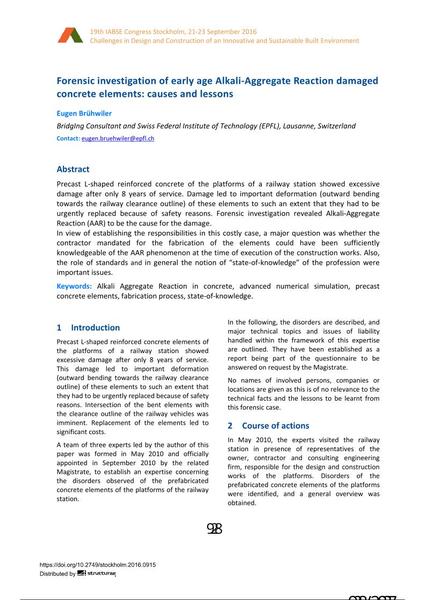Forensic investigation of early age Alkali-Aggregate Reaction damaged concrete elements: causes and lessons

|
|
|||||||||||
Détails bibliographiques
| Auteur(s): |
Eugen Brühwiler
|
||||
|---|---|---|---|---|---|
| Médium: | papier de conférence | ||||
| Langue(s): | anglais | ||||
| Conférence: | IABSE Congress: Challenges in Design and Construction of an Innovative and Sustainable Built Environment, Stockholm, Sweden, 21-23 September 2016 | ||||
| Publié dans: | IABSE Congress Stockholm, 2016 | ||||
|
|||||
| Page(s): | 928-934 | ||||
| Nombre total de pages (du PDF): | 7 | ||||
| Année: | 2016 | ||||
| DOI: | 10.2749/stockholm.2016.0915 | ||||
| Abstrait: |
Precast L-shaped reinforced concrete of the platforms of a railway station showed excessive damage after only 8 years of service. Damage led to important deformation (outward bending towards the railway clearance outline) of these elements to such an extent that they had to be urgently replaced because of safety reasons. Forensic investigation revealed Alkali-Aggregate Reaction (AAR) to be the cause for the damage. In view of establishing the responsibilities in this costly case, a major question was whether the contractor mandated for the fabrication of the elements could have been sufficiently knowledgeable of the AAR phenomenon at the time of execution of the construction works. Also, the role of standards and in general the notion of “state-of-knowledge” of the profession were important issues. |
||||
